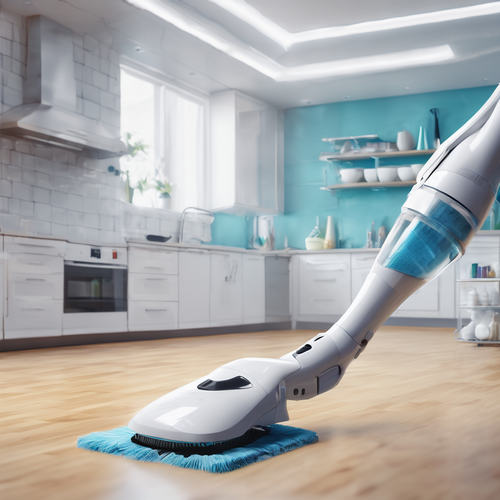From Dust to Shine: The History of the Art of Cleaning
Cleaning, at its essence, is a paradoxical art—a chore that transforms chaos into order, yet often overlooked in the grand tapestry of human achievement. 🌍 While the glint of a spotless surface might seem insignificant, the history of cleaning reveals a remarkable narrative woven with innovation, ritual, and societal evolution. How did something so fundamental become an art form that transcends time?
Our narrative begins in the ancient world, where cleaning was less a matter of personal hygiene and more a reflection of divine favor. In Egypt, priests scrubbed temple floors with the same fervor as they offered sacrifices, equating cleanliness with purity. The ancient Romans took this a step further, implementing communal baths that doubled as social hubs. Ironically, while they scrubbed away the dirt, they often overlooked other hygiene practices, leading to curious instances of disease dissemination amid their grandeur. 🛁
The Rituals of Old: Where Cleaning Was Sacred
In various cultures, cleaning rituals were intertwined with spiritual beliefs. The Japanese, for instance, view cleanliness as a form of respect that extends to the natural world. Their cleaning practices, often elaborate and ceremonial, illustrate a striking antithesis: the more one reveres their environment, the more devotedly one cleans. Consider the Shinto purification rituals, where water serves both as a literal and symbolic cleanser, akin to spiritual rebirth. 💧
The Middle Ages, on the other hand, showcased a drastically different approach. With the advent of the plague, cleaning became a matter of survival. Irony dripped from the reality that the very act of cleaning—once linked to divinity—was now a desperate bid to ward off disease. Streets saw an uptick in scrubbing, yet the irony persisted; while society turned to cleanliness, many did so by dumping waste in the very places they cleaned. 🚮
From Brooms to Bacteria: The Evolution of Cleaning Tools
As we approached the 19th century, the art of cleaning underwent a transformation parallel to technological advancements. The invention of the vacuum cleaner was akin to harnessing a mini tornado in the home—sucking up dirt and grime with such fervor one might wonder about its eventual appetite. The contrasts were stark: from laborers wielding mops like swords to the evolution of machinery that could perform the task at the push of a button. What once took hours now succumbed to a simple flick—how’s that for progress? 🌪️
Then came the dawn of modern cleaning products. The shift from natural ingredients—like vinegar and baking soda—to chemical solutions sparked a new revolution. It was an intriguing metaphor: as homes became cleaner, the toxins hidden within these new potions cast a long shadow on health and the environment. The irony is palpable: in the quest for cleanliness, we stumbled into a labyrinth of environmental neglect and health risks. 🧴
The Modern Age: Technology Meets Tradition
Today, we stand at the intersection of tradition and innovation. Robotics like the Roomba glide across our floors, making tidying up as effortless as breathing. Yet, evocative similes abound—are we not more like spectators watching a performance than participants in the age-old art of cleaning? We’ve turned our homes into pristine displays, but at what cost?
Moreover, consider the trend of minimalism, which has transformed cleaning into an ethos. This lifestyle echoes the disciplines of ancient cultures – a stark contrast to the cluttered lives many lead. In this antithesis-laden world, simplicity becomes a mantra, and the act of cleaning morphs into a meditative experience; perhaps what our ancestors understood all along was that there is beauty in chaos if only we know how to appreciate it. 🏡
“Cleaning isn’t just a task; it’s a reflection of our values and the societies we’ve built,” says Dr. Linda Most, an anthropologist focusing on domestic spaces. “Every sweep of the broom carries echoes of our history.”
Cleaning as an Art: The Future Awaits
As we march forward, one wonders: where does the evolution of cleaning go from here? With increasing awareness of our environmental footprint, there’s a palpable shift towards sustainable practices—traditional cleaning methods returning with newfound respect. Biodegradable products and eco-friendly tools are no longer niche; they symbolize a renaissance in cleaning philosophies. The irony here lies in the returning circle of history; sometimes, to clean our future, we must look back to the past. 🍃
In essence, cleaning is more than a mundane task; it’s a historical narrative that reflects our values, priorities, and innovations. As we wield our cleaning tools—whether they be modern robots or traditional brooms—we’re not merely banishing dirt; we’re participating in a ritual that links us to our shared humanity. So, the next time you sweep your floor, remember: you’re partaking in a centuries-old dialogue, a dance of dust and light. Now that’s something worth celebrating! ✨
